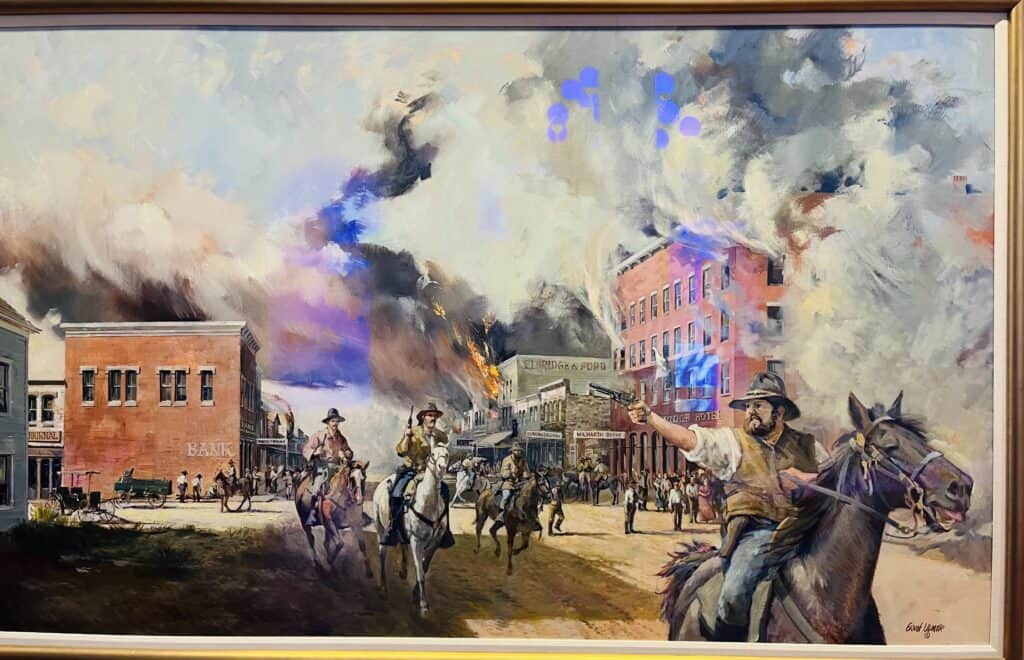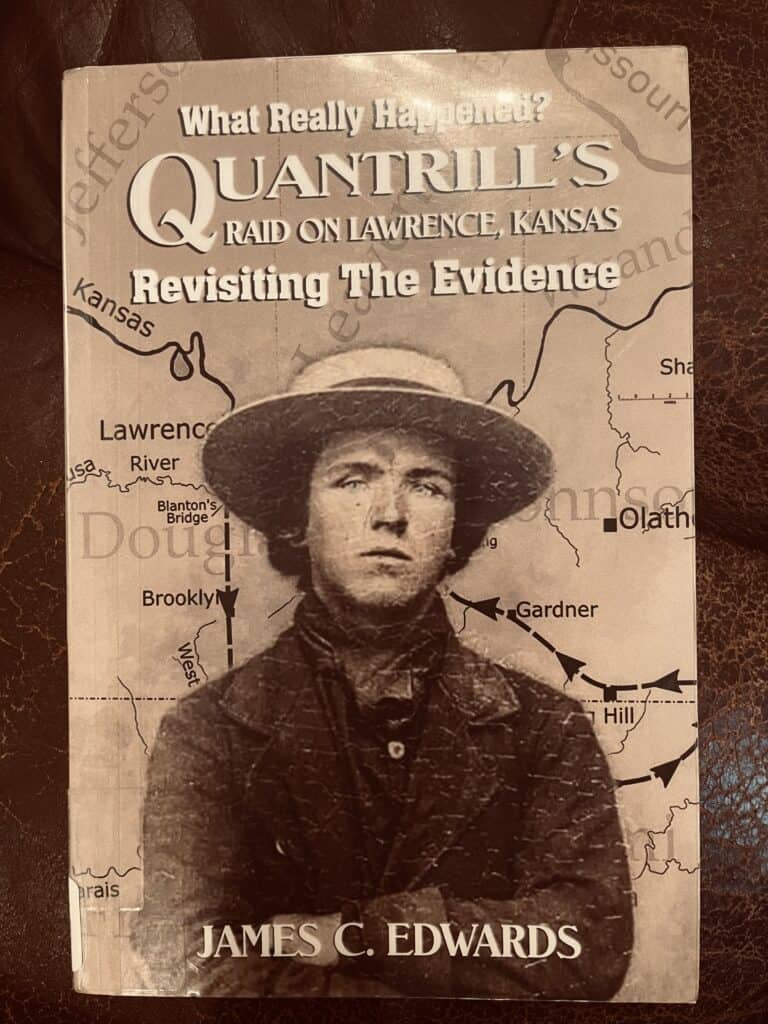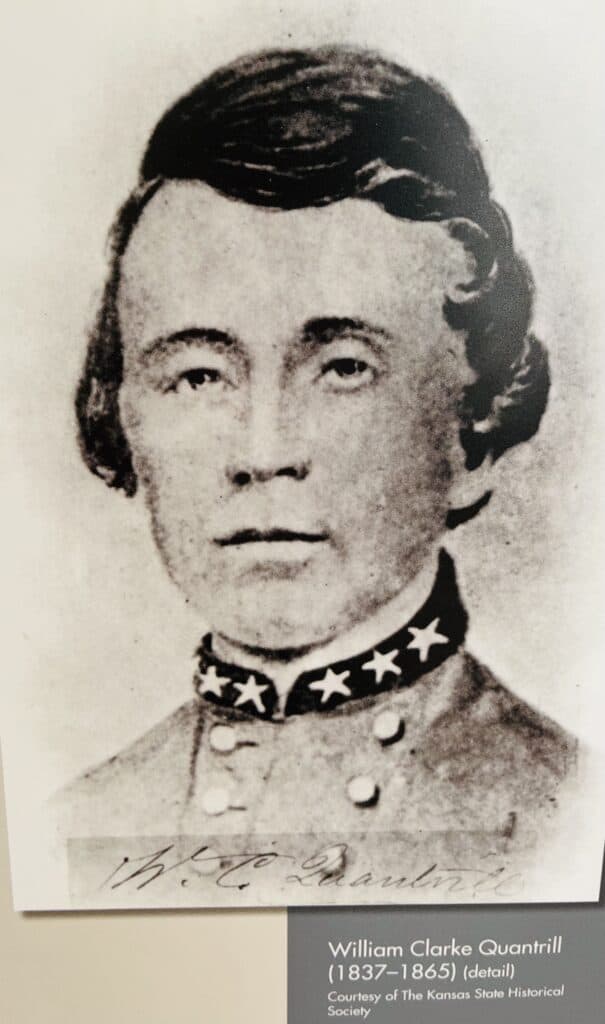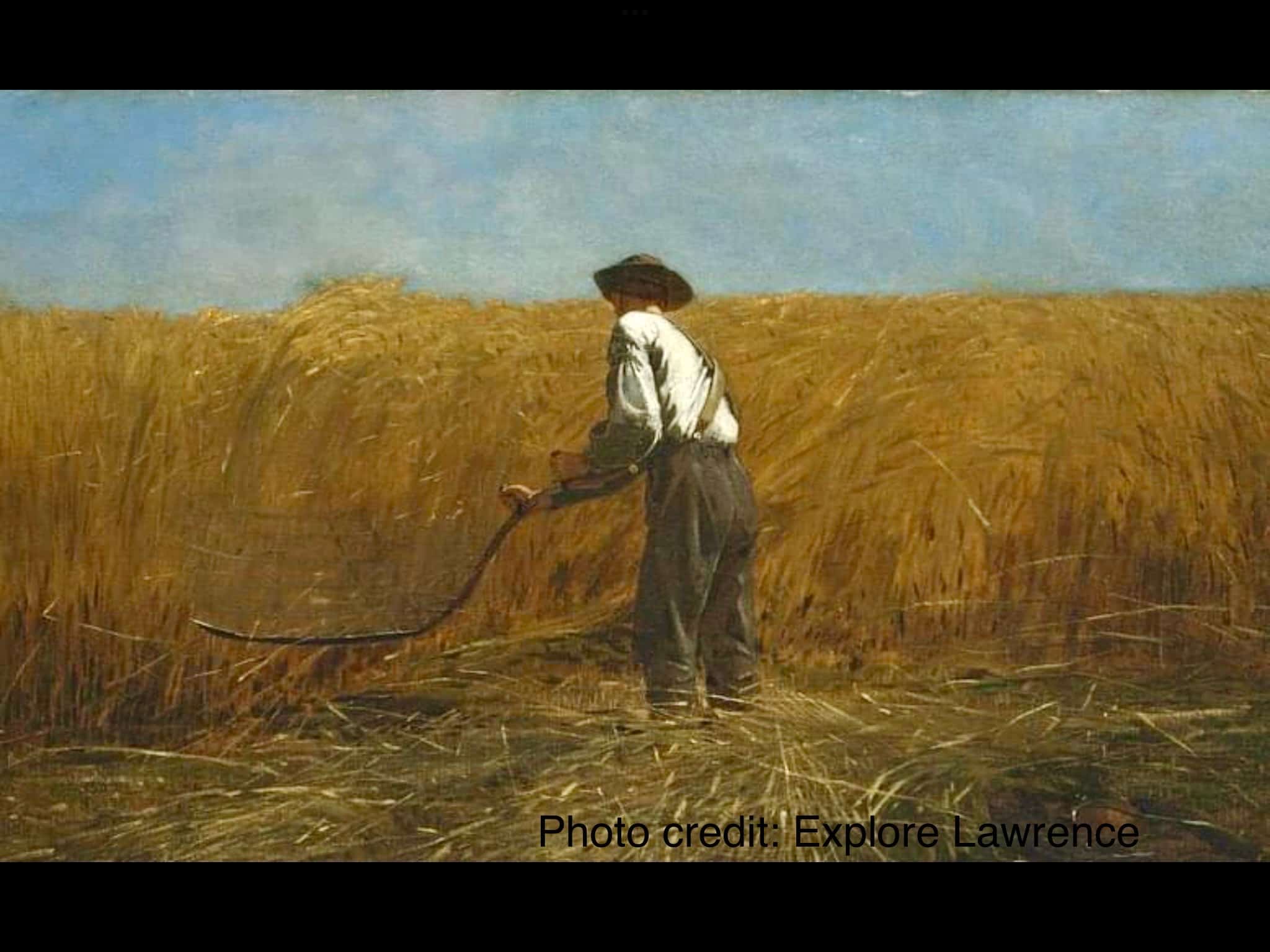Just beyond the metropolis of Kansas City is a town surrounded by farm fields. Lawrence, Kansas has quite a story to tell, as I was soon to discover. The main street, Massachusetts Street is lined with shops and cafes housed in quaint buildings from the 1800’s. I started my visit at the history museum, on Mass Ave, as I wanted to get the town’s backstory first.
The Watkins Museum of History showcases multiple stories with exhibits of Lawrence’s varying cultures (the community is affectionately referred to as “little California”, which as a San Diegan, makes me happy). The museum also recounts the vast stories of Lawrence’s past.

I couldn’t get past the display of Quantrill’s infamous raid on Lawrence. Something didn’t seem right to me about this story. Here are the details:
It was the middle of the Civil War.
There were guerilla conflicts occurring constantly between Kansas (an anti-slavery state) and Missouri (which was pro-slavery).
One week before the raid, Lawrence was warned by the Union Army that Quantrill’s rebels were planning to attack the town.
And sure enough, on August 21, 1863, 400 marauders, led by William Clarke Quantrill charged into Lawrence.
They killed 200 men, stole money and jewelry from the businesses and citizens, and then burned down buildings and homes.
And here’s the glitch: no one returned fire.
As a historical researcher, I love a good challenging mystery, so I set to work contacting local and civil war historians as well as studying books about the event. One particular book excelled in credibility.

This author did impressively extensive research in primary and secondary resources, as detailed in the reams of bibliographical pages. Here is the information the author unearthed:
Several Union troops and militia groups were stationed in town. Many of those soldiers were sharpshooters.
There were 38 battle-experienced, Union officers present on the day of the raid.
There were multiple storehouses of guns and ammunition throughout the town.
Citizens were drilled and trained for battle.
The prairie land was flat and treeless, thus giving visibility for miles of approaching riders.
Quantrill and his men entered Lawrence at 5:00 am, during the summer, when dawn was already lightening the sky.
And here is the shocker: the raiders were in town for four hours. And yet, no one offered any resistance during that entire time.

Here are various theories given for the lack of returned fire:
The citizens were on foot, while the pillagers charged in on horses.
The early morning raid took the townspeople by surprise.
Ensuing chaos prevented the formation of a united front.
The Mayor had locked up the weapons of the militia in an armory, so they were not readily accessible. What?? Why???
None of the reasons make complete sense to me. I cannot imagine military soldiers not engaging in some form of battle. Moreover, the townspeople living on the primitive prairies during the 1860’s, were well-equipped and ready to defend their families and homes at all times – especially during a Civil War and with guerrillas prowling the region.
If you have any insights, please share them with me. I will be pondering this for a long time to come, and would love some conclusive answers, so I can lay it down and move on to the next scintillating puzzler.

